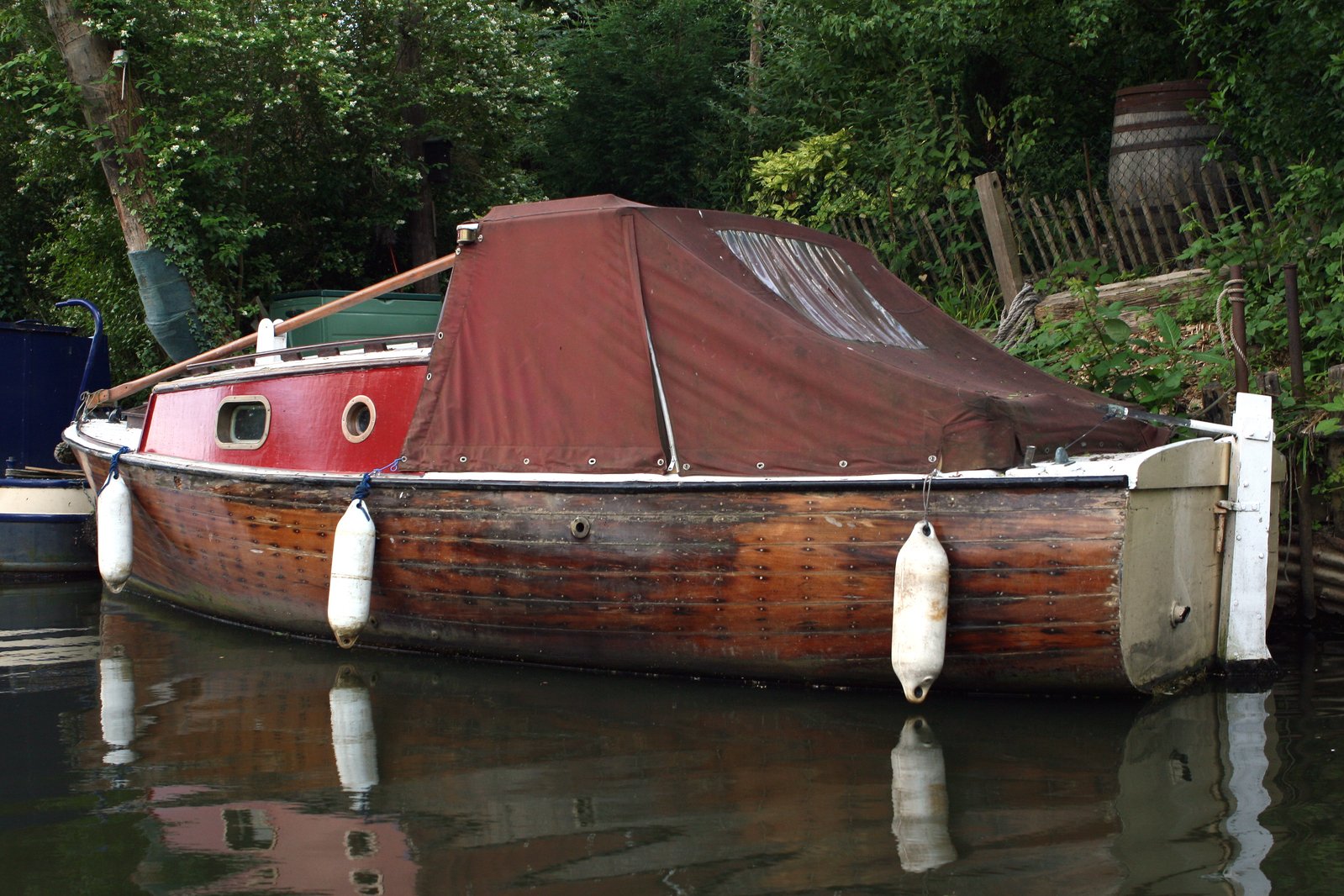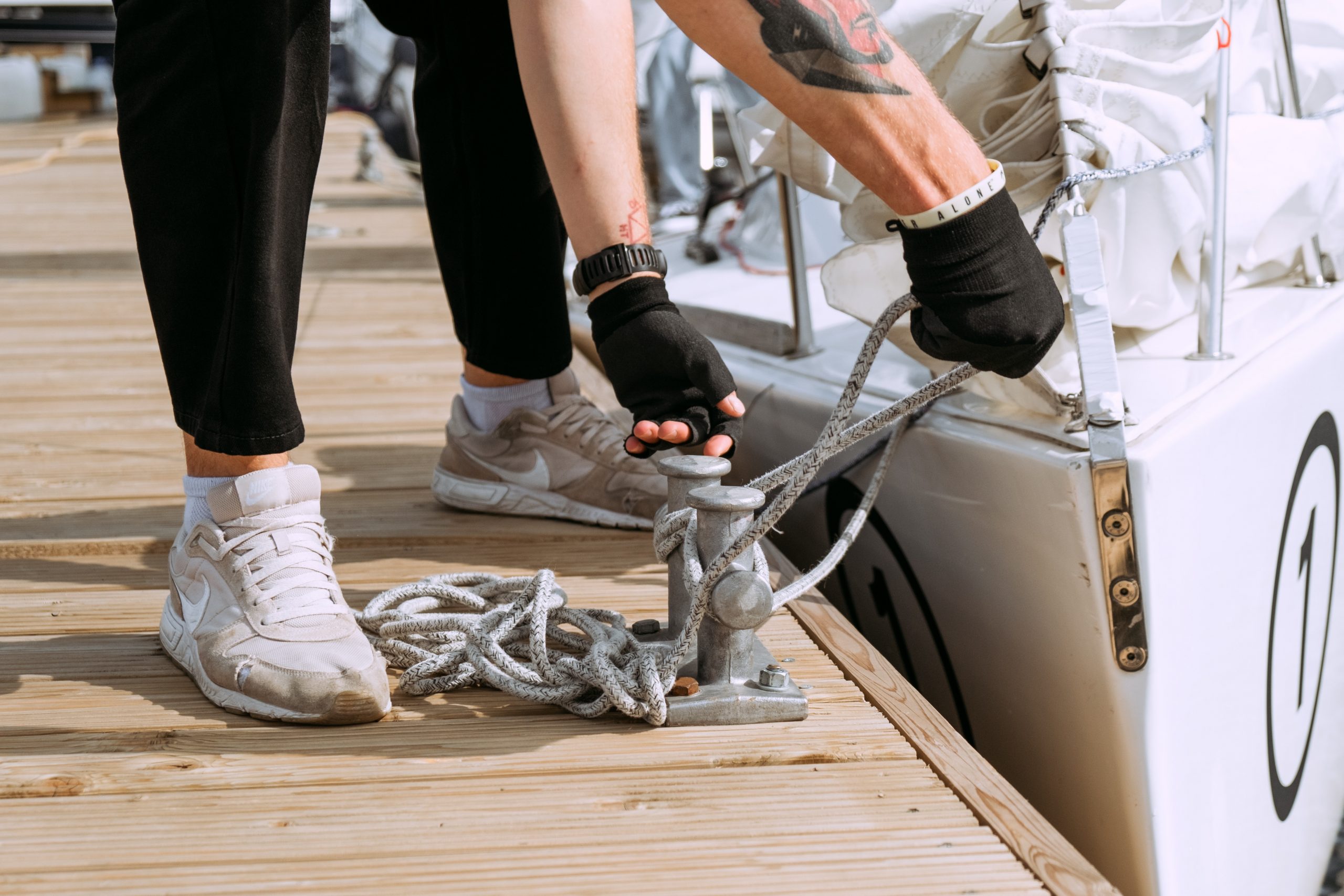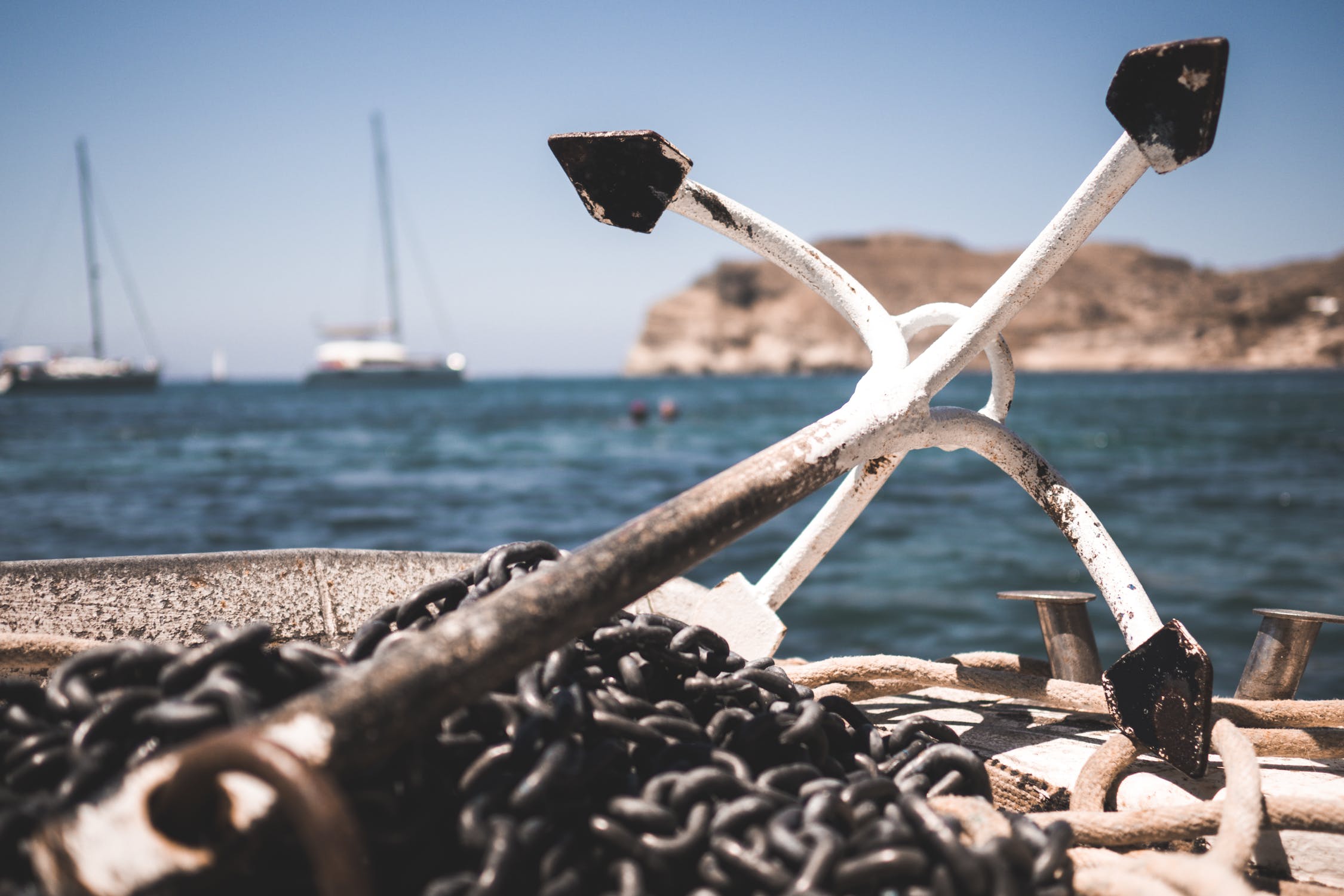
How should you anchor your boat?
In this article, we discuss with you how you can keep your boat steady when you’re staying on the water’s surface or moving to dry land.
What Is a Boat Anchor?
A boat anchor is a metal device with a pointed tip that bites the bottom of a body of water, to pin your boat in place.
Why Do You Anchor a Boat?
Anchoring a boat is an important safety precautionary measure that prevents your boat from being blown away by the wind or from being whisked away by the changing water current. This way, you won’t get lost and risk getting your boat hit by both fixed and floating obstacles.
Types of Seabed
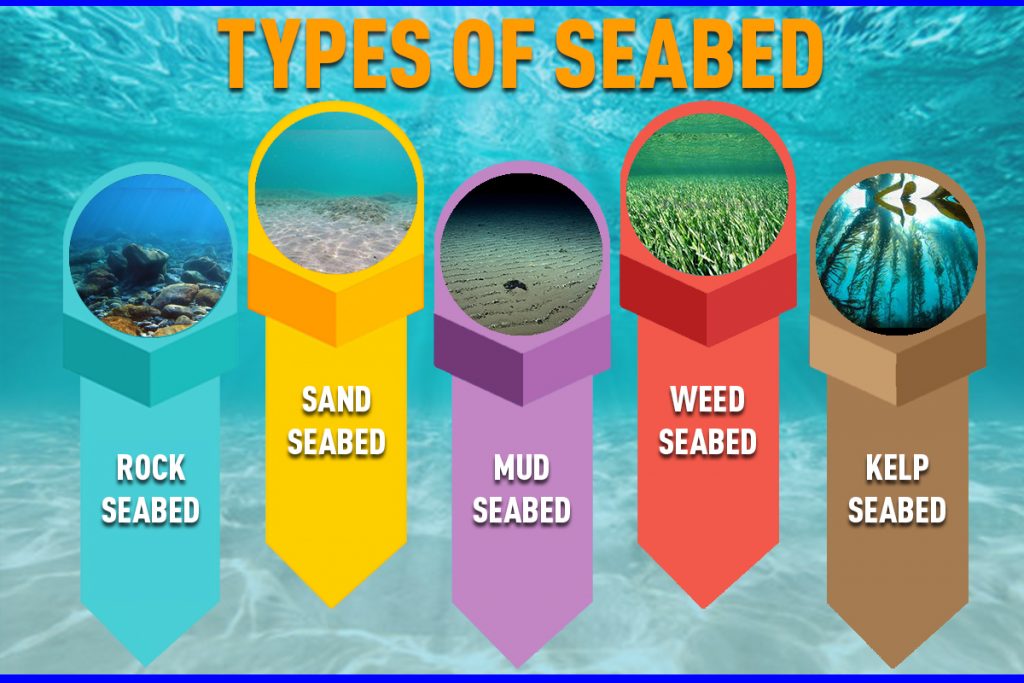
Anchoring your boat isn’t as simple as dropping your main anchor into the bottom of the sea or any body of water. This is because you need to be familiar with the types of seabed which will determine your boat anchor’s stability.
- Rocks – are formed by hardened substances from non-living things that vary in color. The usual ones are black, grey, and brown.
- Sand – rocks broken down into smaller pieces by wind, water, and heat. It later develops a coarse texture and is deposited under the sea.
- Mud – is created when humus soil (to help plants grow) combines with sand and water.
- Weeds – or seaweeds, grow just about everywhere at the bottom of the sea or ocean, caused by mineral deposits.
- Kelp – are a type of seaweed that grows only on one particular area.
Different Types of Boat Anchors
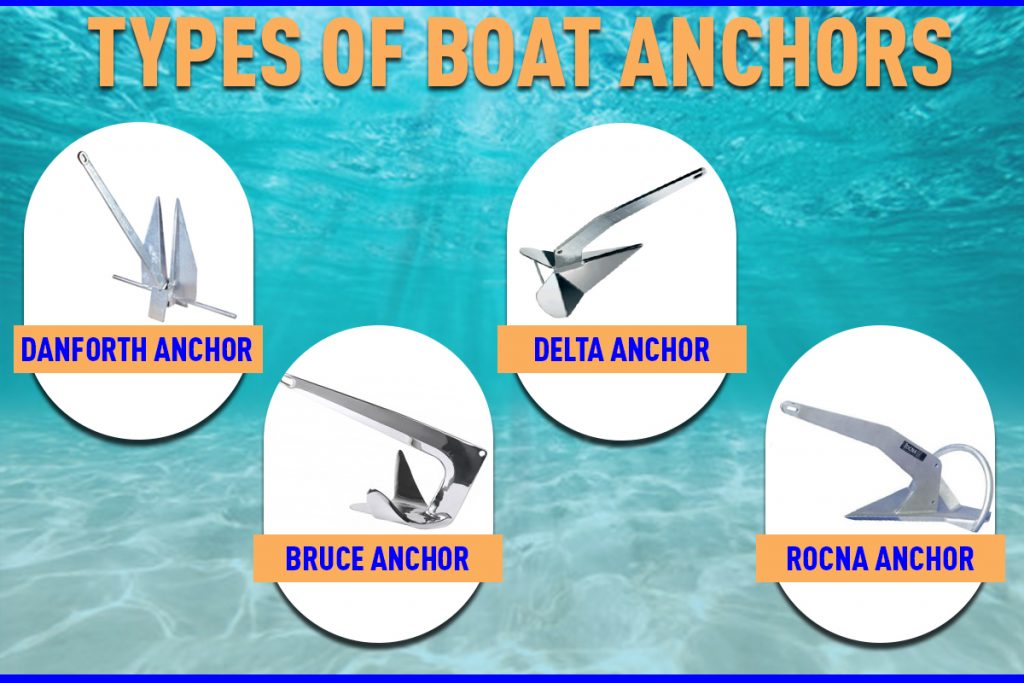
Once you’re sure of where you’ll be getting your boat anchors into, it’s time you use the type of boat anchor that’s specific to the seabed that’s present because if you don’t, your boat will never be stationary no matter how hard you try. Click here for other types of anchors.
- Danforth Anchor – digs into a sandy seabed.
- Bruce Anchor – holds on to a plant-filled (seaweed) seabed.
- Delta Anchor – Effective on sandy and muddy seabed.
- Rocna Anchor – Works on mud, sand, weeds, and kelp.
1. Anchor Your Boat Based on Water’s Depth
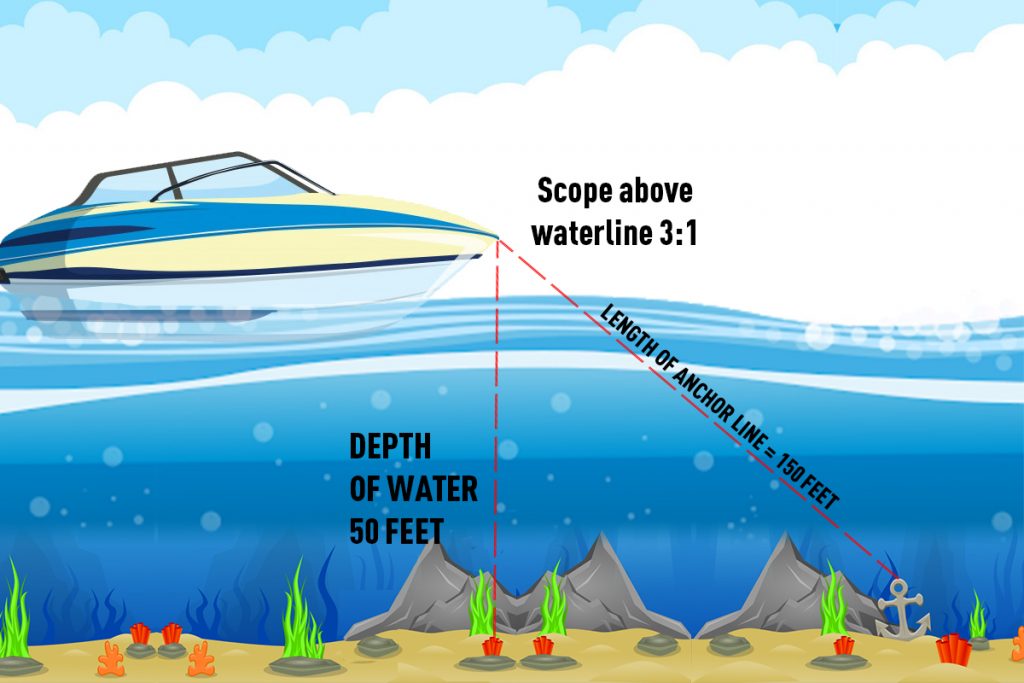
As a general rule, your boat anchor should have a rope that measures a 3:1 ratio. This means your rope has three feet of length for every one foot of water depth, which serves as an allowance for the rope to “play along” snuggly with the water current – not to short and not too long.
But what is meant by depth?
2. Keep Your Feet Away from the Anchor Rope

One silly yet common mistake that people commit when anchoring their boats is they accidentally place a foot or two into the anchor rope’s loop while dropping the main metal anchor head down.
Always check if you’re placing either of your foot or both on the right track because your boat anchor’s rope can get entwined with your feet and knock you overboard.
3. Tie Your Boat Anchor’s Rope Around the Cleat

Connect your boat anchor’s rope to a cleat using a figure eight or how you’d normally wrap it around to create a moving yet stable line or path for your boat anchor. Then, determine where the wind and currents are moving against your boat.
4. Drop Your Boat Anchor at the Bottom

Carefully submerge your boat anchor. Never throw your boat anchor in the open as is the case for some boaters. The problem with it is the tension build up from its rope can damage your boat’s bow area.
Make sure that by the time it reaches the seabed, its chain is at least stretched to 10 meters across the ground. Do it by letting your boat move in reverse, establishing proper grip and preventing chain tangling.5. Find Two Nearest Objects to Align Your Boat With

To check if you’ve successfully anchored your boat, look for two nearest objects. They can either be on your right or on your left (e.g. other boats, rock boulders, etc.). Slowly position your boat beside them which allows you to form a straight line.
If you happen to fall outside of the line for quite some time, it means your boat anchoring has been compromised.
6. Check if an Anchor Drag Exists
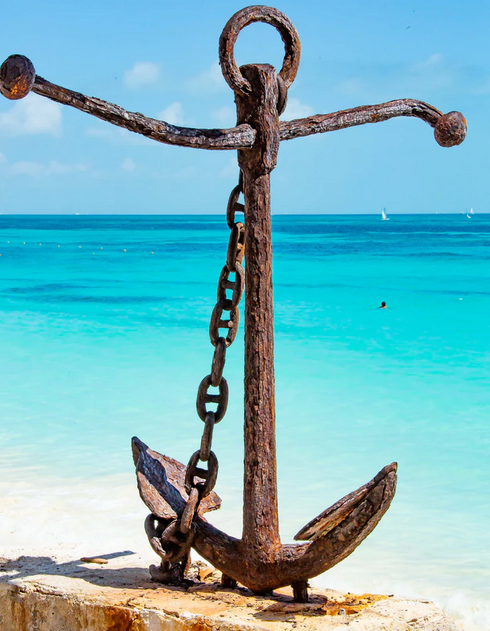
If your boat sways at the slightest touch of approaching waves and doesn’t return to its original position, that means the anchor isn’t properly set at the bottom. To prevent this from happening, it’s important that a friend or a family member is assigned to man your boat every now and then.
If it’s not possible, you should have handy devices like a chart plotter or depth finder to easily communicate emergency signals with one another, should a boat re-anchoring procedure arise.
How Do I Stop Anchor Dragging?
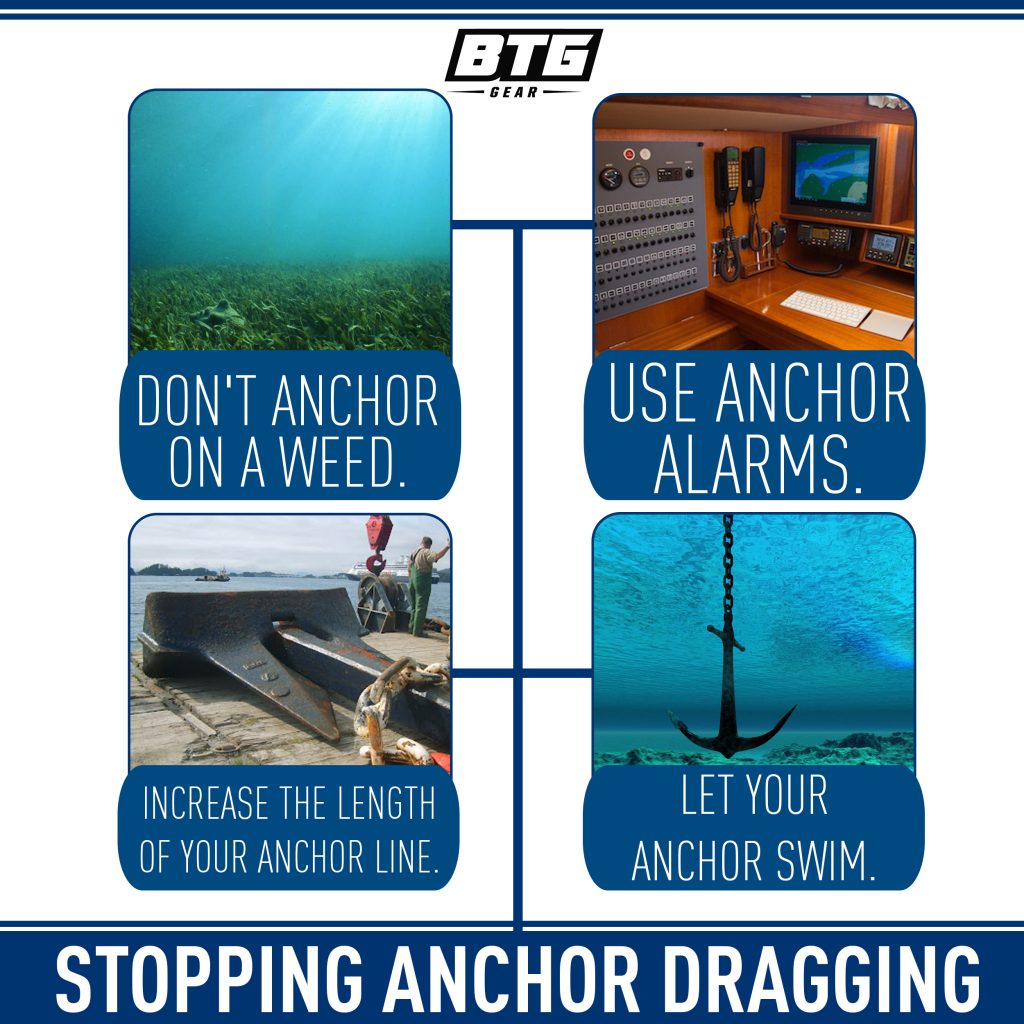
Anchor dragging can be a serious headache because it can easily misplace your boat or in worst case scenarios, it can send your boat adrift, with no way of finding or recovering it.
Here are some tips on how to prevent anchor dragging from happening in the first place:
- Don’t anchor on a weed – because it’s slippery and unstable.
- Use anchor alarms – to easily call for help when your boat doesn’t go back in place.
- Increase the length of your anchor line – because during windy weather conditions, it’ll add more weight on your anchor to hold it down.
- Let your anchor swim – because it’ll automatically be carried by the waves underneath as your boat moves until it latches itself on a solid, fixed, stable spot.
Conclusion
Anchoring your boat can be a shot in the dark. However, as long as you know the basics with the aid of the right boat anchor type, your boat remains unyielding whether amidst a raging storm or calm waters. Share us how you anchor your own boat by dropping us a message below.


